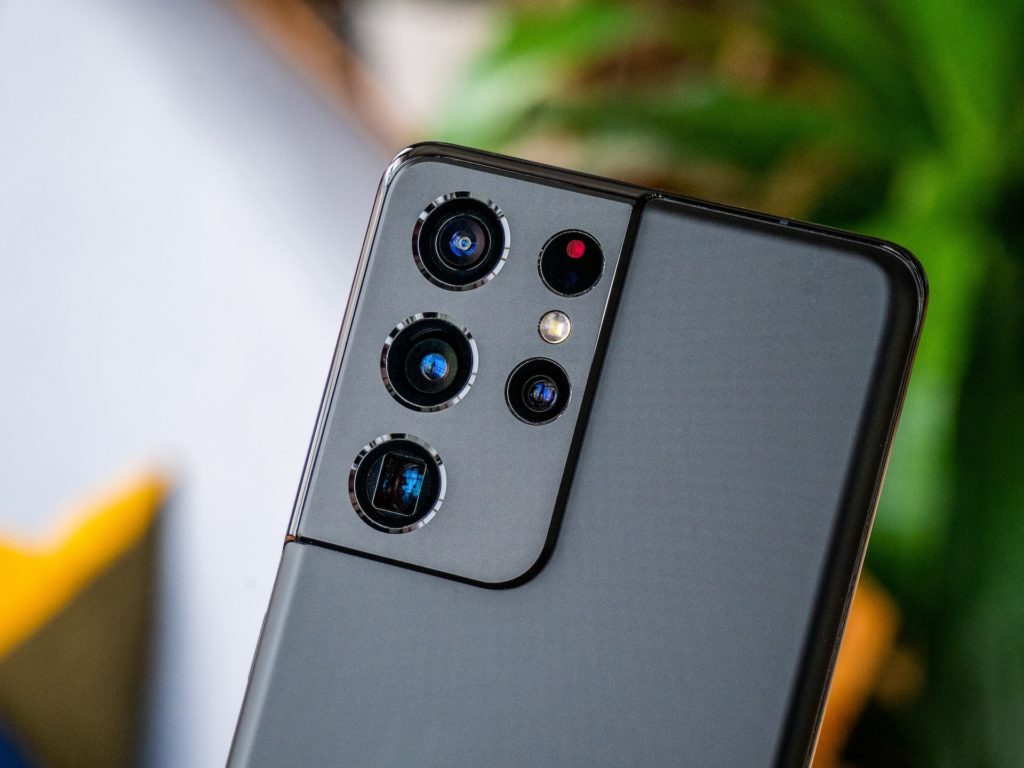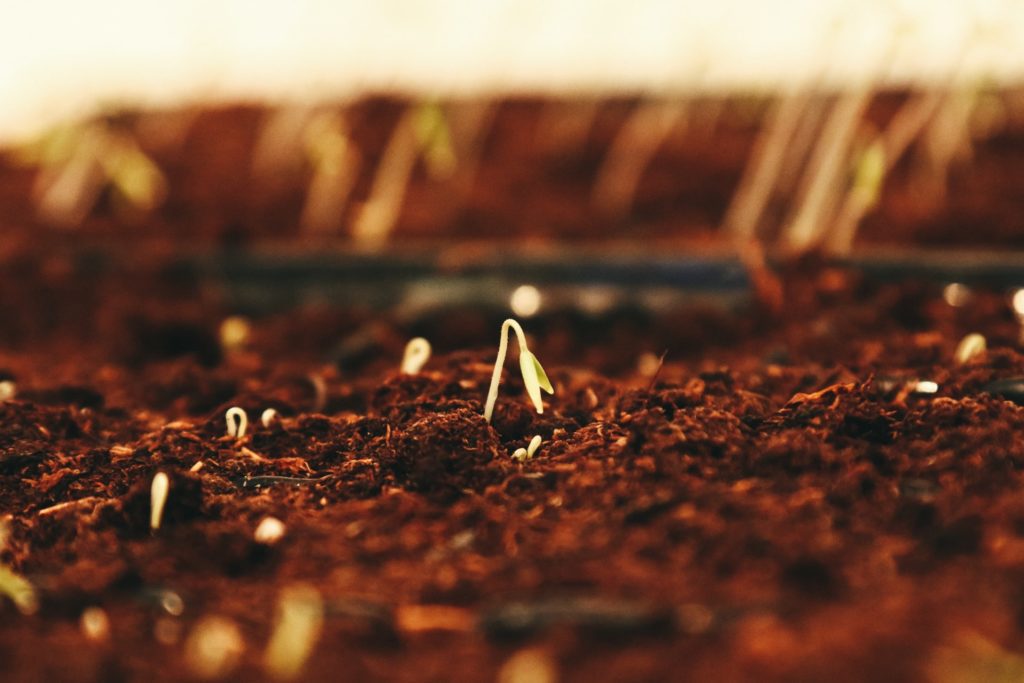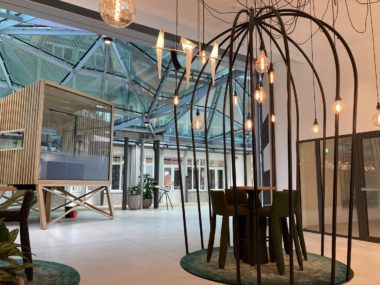Authors: Oliver Lukitsch & Markus Peschl
List of Guiding Principle Articles
- Prelude: What Organizations Have in Common With Living Systems
- Principle #1: Radical Openness
- Principle #2: Sensing the Core
- Principle #3: Identifying and Bringing to Life Latent Potentials
- Principle #4: Designing and Co-creating
- Principle #5: Emergence
- Principle #6: Enabling
- Principle #7: Learning from the Future as it Emerges
This is the final blog post in a series that has been going on for some time: the introduction of our guiding principles. Hence, welcome to the grand finale. It is, in short, a blog post about the special kind of learning and innovation approach we pursue to create something genuinely new.
When we are about to plan for the future, we oftentimes and out of habit, tend to look to the past to inform our actions and decisions. That is to say; we try to learn from past experiences to improve things. It’s a tried and tested strategy and, no doubt, a highly useful one. All too often, however, this turns out to be the go-to approach in innovation projects. The quest of creating something new all too often involves turning to the past and adapting it to future needs.
Our final principle is a significant departure from this convention. Instead of learning from the past, we will show that one can also learn from the future. Doing so does not only change the overall approach to innovation but, more importantly, the quality of an innovation (project) in fundamental ways. At the same time, a profound future-oriented approach to learning and innovation is the key to creating something truly novel – rather than just another version of the past or just a “creative” or out-of-the-box innovation that does not serve a particular future need.
Join us as we delve into our final principle and explore its significance in shaping our projects and the very DNA of our company.
The Traditional Approach to Innovation
So, what do we mean by the “traditional” or the “classical” approach to innovation? First things first, we do not suggest that the classical approach is “bad” per se. It has its merits, without a doubt. You will come to see why.
Most classical innovation techniques follow a recipe: look at past experiences, meaning existing products, services, business models, etc. Then, extrapolate and project them into the future. To succeed, you tweak what you already know to make it better. Get rid of or improve what didn’t work in the past. Release the best new version of “the old”.
This step-by-step approach to innovation is crucial when it comes to making products and services more efficient or/and more effective. Looking for an example?
The classical approach: A case study
Consider the smartphone camera. The first smartphone camera had a single lens. Just like in any camera, a single lens has a limited adjustable focus. More lenses mean a greater variety of focal lengths and more options for taking pictures. Smartphone photography started off with one lens. Today, some models have up to five lenses on the back alone.
This simple case (of the growing number of lenses) illustrates both the benefits and constraints of the classic approach. Phones with five camera lenses were nothing more than a logical improvement and extension of existing technology. The knowledge involved is firmly rooted in the past. Our past knowledge of camera lenses is the fundamental starting point for our smartphones with more lenses. Adding more lenses did not bring about a qualitative change in the sense of radically breaking past patterns or approaches to taking photographs.
Rest assured, taking pictures with a smartphone is a different story today than it was when the first phone cameras appeared. This would not have been possible without genuine hard- and software innovations. But you will agree that increasing the number of lenses is not a paradigm shift in smartphone engineering.
Moral of the story: classic innovation approaches rely on past experience and existing knowledge. For this reason, the classic approach to innovation can also be highly predictable. When the first two-lens smartphones came out, you could already see that a new model with a third lens was just around the corner.

The limitations of learning from the past
Again, nothing’s wrong with “learning from the past.” However, to create something truly and radically new, the classic approach won’t do. To bring forth genuine novelty is to create something that did not exist before, something that cannot be (fully) predicted from past experience. This is precisely where our method of “learning from the future” enters the stage.
Learning from the future as it emerges
The idea of “learning from the future” is tricky to summarize. In a nutshell: to learn from the future means to engage with an unfolding reality and to sense what is not yet there, what is about to emerge, although it is not yet manifesting materially. It is about sensing future potentials and developments while they are still in the realm of possibility. All of this is easily said, but it has far-reaching consequences.
What can we learn from an emerging future?
So what is it that we actually can learn from an emerging future? Usually, we learn from things that already exist or have happened. Since that’s not an option here, what is it that can be found in the future that can teach us something?
As already hinted at, the future harbors something that is called (latent) future potentials. We have discussed the idea of future potentials in more detail in another blog posts of this series. In a nutshell, future potentials lie dormant in or are latent in already existing things (products, services, markets, societal developments, etc.) However, they have not yet materialized; they are emerging and, as such, not materially manifest. In other words, they are implicit in existing products, services, social systems, and technologies. So while future potentials cannot be “extracted from the past,” they do not come out of nowhere.
But a real-life example might illustrate: The Internet was a technology that already contained the very potential of social media, an entirely new way for people to connect and live their social lives. But it took a visionary to see and bring to life the dormant potential in what was initially nothing more than a network for email traffic.
Learning from the future as it emerges precisely means exploring these latent potentials that lie hidden beneath the obvious.
Shaping the future by bringing potentials to life
But how can we “sense” the future as it is emerging, to begin with? How can we connect with latent potentials?
The first important step is to break our habit of looking at past experiences while suspending our patterns of thinking and perception. Past experiences are imbued with biases and assumptions about the present and the future. Therefore, it is critical for any innovation team seeking to create radical novelty to first let go of past assumptions about how things are and how they should be done.
In essence, learning from the future involves “letting go.” It necessitates letting go of control and our urge to predict (the innovation). Instead, we must engage with or get in touch with an unfolding reality. To illustrate, one can compare it to dancing with somebody. Thereby, one has to engage in a constant give and take, a back and forth between oneself and the environment (partner, music, space etc). It is an act of coupling with the environment, being open and receptive while taking the initiative.
By exposing oneself to the environment and being open and receptive, the innovator can sense and shape potentials. Most importantly, they can also identify which potentials are most significant. But how does it look like when a potential is successfully realized and comes to life? Let us provide you with an example of what one can gain by “learning from the future.”

The office of the future at its core
Ten years back, we started a future-driven innovation project with Bene, a leading supplier of office furniture. Our innovation projects are powered by our technology “leap”, and it was also the program we went through together with Bene.
In this project, we enabled the innovation team to open their eyes to a future that had to manifest itself yet: instead of simply designing the next piece of furniture and expanding its existing portfolio, Bene came to understand that the office of the future is not about a (fixed) arrangement of furniture. Their insight can be distilled as an understanding that work is learning and learning is work.
Almost every knowledge process or activity in the office can be understood as a specific kind of learning (experience). The employee (and especially knowledge worker) of the future doesn’t want just one kind of fixed office setup. What they really need are different types of flexible, easy-to-change arrangements that allow for different kinds of knowledge processes and, therefore, different kinds of learning experiences.
Based on this understanding, the office is not just a place where things get done to fulfill the daily work routine. Rather, it is a place that enables all kinds of work (and thus learning) experiences that a fixed, conventional office (including home offices) cannot provide.
That was ten years ago. Today, in the aftermath of a devastating pandemic and a seismic shift toward working from home, that insight is even more relevant. People are reluctant to return to the office precisely because their home office space offers them more or less what the external office does. They need a space where they can grow, where they can meet different learning needs – and where they can learn by working and work by learning.
Bene’s insight was not at all an intellectual exercise. It led to the development of concrete products, namely the Bene PIXEL. Pixel is a modular piece of furniture that can be easily transformed into chairs, tables, platforms, or stands. It makes it possible to create office settings that meet the user’s learning and working needs, creating purposeful enabling spaces for creatives, thinkers, and doers. The project has positioned Bene as the office solution of choice for creative knowledge workers.
We have more to say about this. For instance, here, on our project page, but also in this blog post about “future potentials” – a concept deeply linked to what we understand as learning from the future.
Got inspired? We are always on the lookout for exciting projects where we can work with our clients to learn from the future as it emerges and then help them shape their unique futures.
Want to read more interesting stories? Subscribe to our bi-monthly newsletter:
Subscribe to Our Newsletter
Keep your innovative edge with more stories like this and additional reading tips, muses, and project updates.


